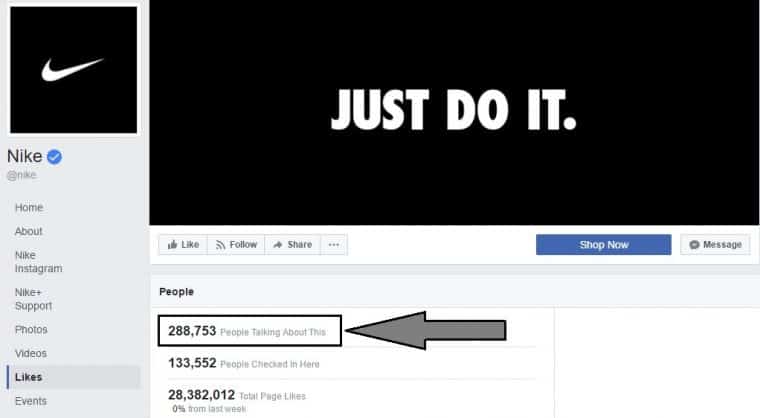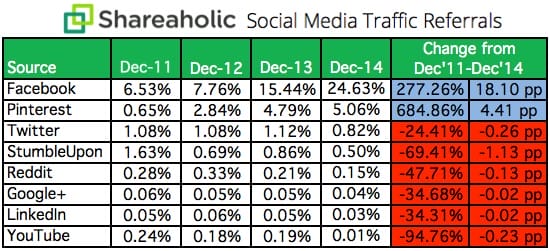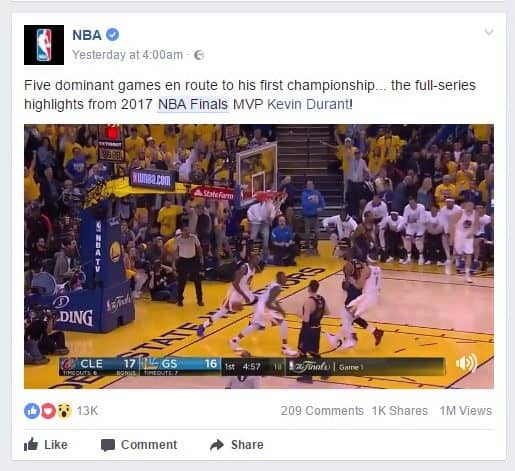7 Important Facebook Metrics and How to Improve Them
We will review seven important Facebook metrics here as well as some ways to improve them.

Congratulations! You’ve finally taken your own business to social media. The fan base on Facebook is growing and your tweets enjoy a fair amount of shares. Now, you’ve become a social media manager because you have to deal with a wide range of metrics.
Facebook is the most popular site for both well-known brands and small businesses, so we will review seven important Facebook metrics here as well as some ways to improve them. They will help you to determine whether your social media strategy is working properly.
Get the Best Updates on SaaS, Tech, and AI
1. Click-Through Rate (CTR)
This indicator is defined as “the number of clicks to a web page.” It measures how successful the promotion effort is because it essentially shows the total number of Internet users who viewed a page. By measuring the CTR, one can determine the overall interest to the content on the website or a social media page.
To attract attention, advertisers on Facebook use posts and ads that pop up in the newsfeed as well as special ad sections on the home page. However, this may not be enough for the success since Facebook users see lots of similar ads every day.
How to Improve:
- Reduce the length of the copy to 80 characters or less. Online marketing experts typically recommend creating concise posts with around 40 characters because they generate the highest engagement.
- Facebook users are most likely to click on a lick if it’s placed at the start of the posts. Adjust your posts accordingly.
2. Online ‘conversation’
‘People talking about this’ is a powerful metric because it shows the number of likes a page is getting. In turn, it identifies how high the level of interest in the brand is. To view it, just click on Likes section in the side navigation bar (as shown below on the screenshot). In addition to the conversation, this section contains a number of total page likes, including from last week, and the number of people who checked in.

How to Improve:
- Commit to tracking the time and day visitors are talking about the brand the most. It means that the posts you uploaded that time were the most engaging. If the number is lower, the posts might not be attractive to the viewers. As the result of tracking, you will know the content your target audience is more interested in.
3. Network Referral Traffic
Social media, and particularly Facebook, can drive lots of visitors to websites. In fact, recent studies found that about 30 percent of all website traffic comes from there. For example, Facebook drove only 6.5 percent of referrals in 2011 but this indicator had reached almost 25 percent in 2014. So, it’s the number one source of social referrals to websites right now.

Image Credit: Shareaholic Reports
How to Improve:
- Increase the number of posts. The more posts you share, the more traffic you get. Post at least once every two hours and even go beyond your official page to reach a wider audience. Just make sure you’re targeting people in the target industry.
- Promote your content. Facebook offers great opportunities to promote content through ads. One of the most popular solutions offered by Facebook Business is Custom Audiences. Visit its page on Facebook Business and learn how to use this tool to reach more people.
4. Organic Reach
Despite a large number of recent reports about organic reach being dead, it’s still a very useful metric. It’s defined by Facebook as “the total number of unique people who were shown your post through unpaid distribution.” In this case, unpaid distribution involves shares of posts by users that appear in newsfeeds of their friends.
If your reach is low, it means that your business page does not get a reasonable amount of attention. This needs to be solved!
How to Improve:
- Include questions to post to stimulate discussion and more sharing
- Use images or videos to replace links. People love visuals!
- Provide helpful privileged information by using latest reports, studies, and surveys in the industry or niche
- Publish evergreen content. “This type of content survives the test of time,” says Kent from Assignment Helper. “Therefore, you get traffic regardless of time of the year.”
5. Influence
Social media influencers play an important role in promoting businesses because they have the power to impact buying decisions of others. Measuring your own influence score is impossible by using Facebook’s own means, so users often turn to third-party developed tools like Klout and PeerIndex.
They generate a score based on the type of interactions and their number. 100 is the highest rating.

How to Improve:
- Use Google search results to create relevant posts. This is simple: just Google a keyword and find out the top results.
- Learn what content is popular at the moment. Look for posts with 1,000+ likes and shares and see what is hot (check out the popularity of the post below). Then, create your content on the same topic.
6. Engagement Rate
This metric shows whether the content is appealing to the audience. A high rate means you’ve succeeded in intriguing Facebook users while a low score means the opposite.
How to Improve:
- Include images and videos in posts. The most engaging posts on Facebook are those that contain multimedia, including images and videos. For example, photo posts get at least 39 percent more interaction.
- Be active by replying to comments on your posts. This will show that you are open to discussion and interesting conversation.
7. Assisted Conversions
If a Facebook users land on a website through a link in a post, it means that Facebook gets an assist for bringing them. This metric thus shows how effective posts are and whether one needs to make them more appealing.
How to Improve:
- Use action words like “try,” “go,” and “quickly.”
- Create a killer landing page. Ensure that all elements on your landing page direct the attention to the CTA button and can really persuade.
Lucy Benton is a marketing specialist, a business consultant who finds her passion in expressing own thoughts as a blogger, and currently, works at Awriter.org. She is constantly looking for the ways to improve her skills and expertise.
FTC Disclosure: The pages you visit may have external affiliate links that may result in me getting a commission if you decide to buy the mentioned product. It gives a little encouragement to a smaller content creator like myself.


